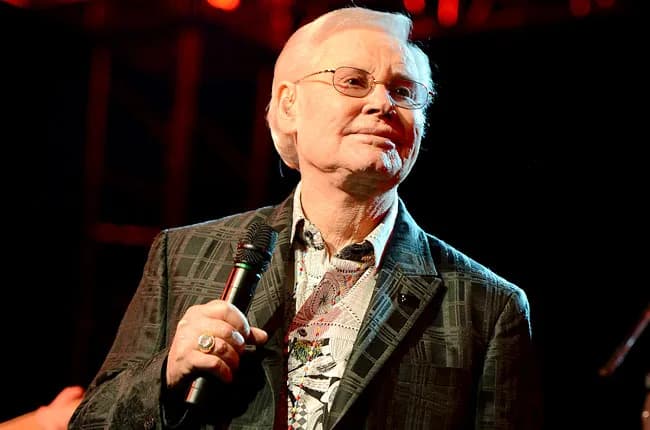
The Confession of the Country King
In the vast and often somber catalog of George Jones, a man whose voice could turn heartache into pure gold, there exists a song that stands apart for its knowing wink and self-effacing humor. It’s a track that encapsulates the sheer impossibility of separating the artist’s turbulent life from his genius: the 1982 co-written collaboration with Merle Haggard, “No Show Jones.”
This song, which appeared on the joint album A Taste of Yesterday’s Wine (also 1982), is far more than just a footnote; it is a musical act of confession and redemption. While the single itself was never released as an A-side and therefore did not chart on its own, its existence is a direct reference to the most notorious, and frankly, damaging period of George Jones’s career. Throughout the 1970s and early 1980s, fueled by severe alcohol and substance abuse, The Possum developed an infamous habit of failing to appear at his own concerts, earning him the bitter and painfully accurate nickname “No Show Jones.”
The story behind this nickname is legendary and darkly comedic. Promoters grew so frustrated that they often sold tickets with a disclaimer, knowing full well the gamble fans were taking. In 1979 alone, reports suggest he missed a staggering 54 shows. Stories abound—from his wife Tammy Wynette hiding his car keys to prevent him from driving to the liquor store (which famously resulted in his commandeering a riding lawn mower for the trip), to instances where he simply never left his hotel room. The turmoil cost him millions, derailed his marriage to Wynette, and very nearly ended his career, only to be dramatically salvaged by his 1980 masterpiece, “He Stopped Loving Her Today.”
The meaning of “No Show Jones,” the song, is therefore a remarkable piece of public penance. Co-written with his old friend Merle Haggard, who shared his own colorful history of living on the edge, the tune is set to a lively, upbeat honky-tonk beat that almost disguises the gravity of the subject matter. It is a song that faces the past head-on, essentially turning a derogatory label into a humorous stage persona. When the man whom many considered the greatest country singer of all time opened his show with this song later in his career—as he often did after achieving sobriety and stability in the mid-1980s—it was a powerful moment. It was an acknowledgment to the loyal fans who had stood by him through all the heartbreak and missed engagements, a signal that he knew their patience, and his failures, were part of his story.
For those of us who remember those difficult times, the song evokes a complex blend of nostalgia and relief. It reminds us of the chaotic brilliance of a flawed genius, and the kind of rough-and-tumble honesty that once defined country music. George Jones was never one to hide his sins in his music, and by singing “No Show Jones,” he was doing what he did best: turning his deepest personal struggles into an art form that was devastatingly relatable. It was the moment the myth was embraced, and the man inside the legend truly showed up.